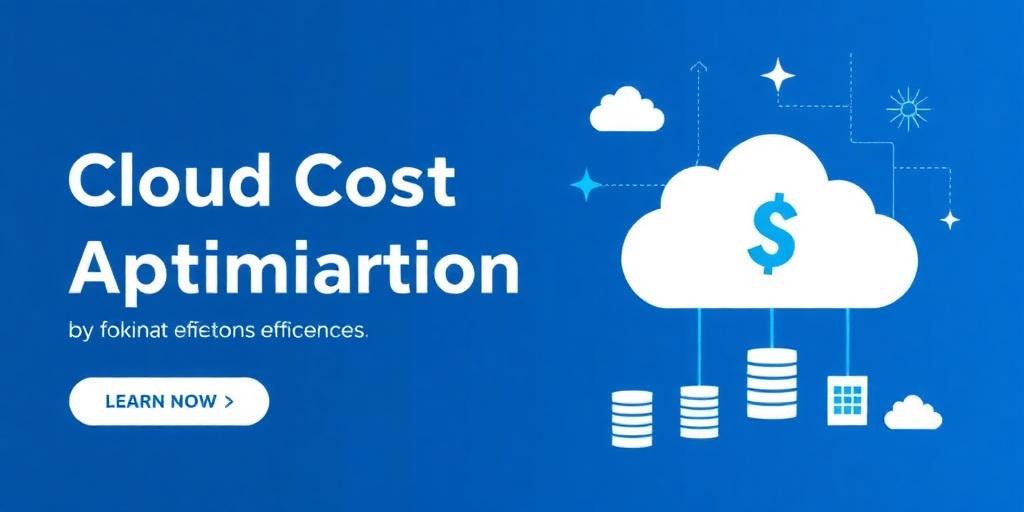Cloud Cost Optimization Tips for Startups
In the fast-paced world of startups, every penny counts. Cloud computing offers scalability and flexibility, but without proper management, costs can quickly spiral out of control. This guide provides actionable strategies to optimize your cloud spending and ensure your startup's resources are used efficiently.
1. Understand Your Cloud Spending
The first step in optimizing cloud costs is to gain complete visibility into your spending. Utilize cloud provider tools like AWS Cost Explorer, Google Cloud Cost Management, or Azure Cost Management to track your resource usage and identify cost drivers.
- Tagging: Implement a robust tagging strategy to categorize resources by project, department, or environment. This enables granular cost allocation and reporting.
- Budgeting and Alerts: Set up budgets and configure alerts to notify you when spending exceeds predefined thresholds. This proactive approach helps prevent unexpected cost overruns.
2. Rightsize Your Resources
One of the most common causes of cloud waste is over-provisioning resources. Regularly review the utilization of your virtual machines, databases, and other services, and adjust their sizes to match actual demand.
- Monitoring: Use monitoring tools to track CPU, memory, and network usage. Identify underutilized resources that can be downsized or consolidated.
- Autoscaling: Implement autoscaling to automatically adjust resources based on demand. This ensures you only pay for what you need, especially during peak and off-peak hours.
3. Optimize Storage Costs
Storage costs can quickly add up, especially with the increasing volume of data. Implement a storage tiering strategy to move infrequently accessed data to lower-cost storage options.
- Lifecycle Policies: Use lifecycle policies to automatically transition data to cheaper storage tiers based on age or access frequency. For example, move older data from standard storage to archival storage.
- Data Compression and Deduplication: Implement data compression and deduplication techniques to reduce the amount of storage required. This can significantly lower your storage costs, especially for large datasets.
4. Leverage Reserved Instances and Spot Instances
Cloud providers offer various pricing models to help you save money. Reserved Instances (RIs) and Spot Instances are two powerful options for reducing compute costs.
- Reserved Instances: RIs offer significant discounts (up to 75%) compared to on-demand pricing, in exchange for committing to use a specific instance type for a specified period (e.g., one or three years). Analyze your long-term resource needs and purchase RIs for predictable workloads.
- Spot Instances: Spot Instances offer even deeper discounts (up to 90%) compared to on-demand pricing, but come with the risk of being interrupted with short notice. Use Spot Instances for fault-tolerant workloads that can handle interruptions, such as batch processing or testing.
5. Automate Infrastructure Management
Automating infrastructure management can help reduce operational overhead and improve resource utilization. Use Infrastructure as Code (IaC) tools like Terraform or CloudFormation to automate the provisioning and configuration of your cloud resources.
- Infrastructure as Code: IaC allows you to define your infrastructure in code, making it easier to manage, version, and replicate. This reduces manual errors and ensures consistency across environments.
- Configuration Management: Use configuration management tools like Ansible or Chef to automate the configuration and maintenance of your servers and applications. This reduces the time and effort required to manage your infrastructure.
6. Regularly Review and Optimize
Cloud cost optimization is an ongoing process, not a one-time task. Regularly review your cloud spending, identify areas for improvement, and implement new strategies to reduce costs.
- Cost Optimization Reviews: Conduct regular cost optimization reviews to assess your cloud spending and identify opportunities for savings. Involve stakeholders from different teams to gather diverse perspectives and insights.
- Stay Updated: Stay informed about new cloud services, features, and pricing models offered by your cloud provider. These can often provide new opportunities for cost optimization.
By implementing these cloud cost optimization tips, startups can significantly reduce their cloud spending, improve resource utilization, and free up capital for other critical business initiatives. Remember that a proactive and continuous approach to cloud cost management is essential for achieving long-term success in the cloud.









